In the old city, this monumental building is the centerpiece, often described as one of Europe's most spectacular opera houses. The current building is the third iteration since a few decades after it was finished, a fire destroyed much of the building and it was rebuilt according to Semper's plans by Manfred Semper, the architect's son. Again during World War Two, the building was destroyed. While new stage machinery and modern techniques were used in the 20th century remodel, the design remained true to the style of Semper.The building is essentially eclectic, a trend common in 19th century historicism. It is sometimes defined as "Dresden Baroque" architecture while it has similarities with Italian Renaissance architecture as well as both Greek and Roman revival architecture. The emphasis on sculpture is also common in Baroque architecture. Monuments on the portal depict artists, such as Johann Wolfgang von Goethe, Friedrich Schiller, William Shakespeare, Sophocles, Molière and Euripides.
Left: oblique view from the side; Center: front view; Right: outermost bay on the left with Sophocles, holding a theatrical mask, in the top arch |
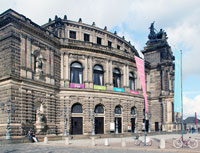 |
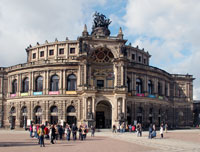 |
 |
| |
|
Center: entrance portal (See below for details); Right: Johannes Schilling, Panther quadriga with Dionysos and Ariadne, 1871–1877 |
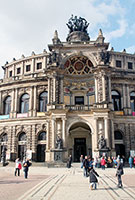 |
 |
| |
|
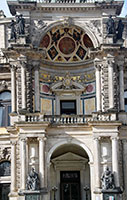 |
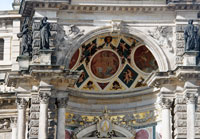 |
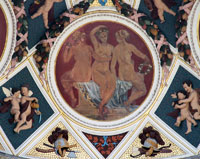 |
| |
|
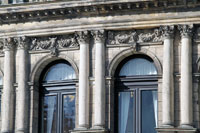 |
 |
Classical architectural detailsThe style might be defined as classical revival or even Baroque. Some call it simply eclectic! Windows framed by columns (aedicules) are common in Italian Renaissance architecture; bucrania and swags occur in Roman architecture. |
| |
|
Statue at entrance portal, left side: Ernst Friedrich August Rietschel, the poet Johann Wolfgang von Goethe, first half of 19th century?
|
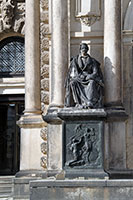 |
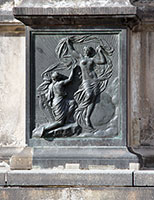 |
 |
| |
|
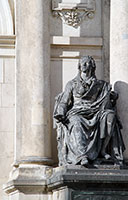 |
Statue at entrance portal, right side: Ernst Friedrich August Rietschel, the poet Friedrich Schiller, first half of 19th century? |


 Click here to return to index of art historical sites.
Click here to return to index of art historical sites.
 Click here to return to index of artists and architects.
Click here to return to index of artists and architects.
 Click here to return to chronological index.
Click here to return to chronological index.
 Click here to see the home page of Bluffton University.
Click here to see the home page of Bluffton University.

